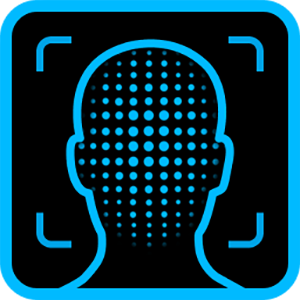How Liveness Detection Makes Facial Recognition Systems More Secure Against Spoofing Attacks
Hollywood loves to show hackers breaking through biometric security by duplicating fingerprints, crafting state-of-the-art 3D face masks, or designing fake contact lenses that fool iris scanners. While real-life situations are not nearly as dramatic as in Hollywood, the reality is there are people with bad intentions that do attempt to bypass biometric recognition systems.
Biometric recognition is commonly used with today’s smartphones through fingerprint or facial recognition, and for other commercial uses, such as for accessing building security systems. These features are designed to ensure that only the right people gain access, but how secure are they really?
Every authentication method carries some risk – and biometric recognition is no exception. Without strong liveness detection, even highly accurate facial or fingerprint recognition systems can be tricked by spoofing attempts. To ensure truly secure authentication, it’s essential to have robust protection against these presentation attacks.
What is Liveness Detection?
Liveness detection is a biometric security process that confirms whether a face presented to a camera belongs to a live person, rather than a photo, video, or mask. It’s the core of anti-spoofing, ensuring that facial recognition systems can distinguish real users from fraudulent attempts.
Liveness detection can identify real users through various cues, such as:
- Natural facial movements – blinking, smiling, or head turns that are hard to replicate in a static image.
- Depth and texture analysis – 3D facial depth sensing or skin texture checks to distinguish real skin from flat photos or screens.
- Light reflection patterns – analyzing how light interacts with a real face compared to a printed image or display
Together, these methods ensure that only real human users – not photos, videos, or digital spoofs – can successfully pass facial recognition verification.
Potential Spoofing Attacks on Facial Recognition Without Liveness Detection

The most basic and common form of attacking facial recognition is by using a printed photo of a person’s face to fool the camera. This type of attack is common in unattended environments like unmanned stores, self-service kiosks, or mobile applications. Photo attacks have become a low-cost and easily executable method to compromise security. Adding liveness detection, like prompting a blink or analyzing 3D depth, can significantly reduce the risk of such photo spoofing attempts.
Beyond simple photos, attackers can use high-resolution photos, life sized stereoscopic prints, moving images of a person’s face, or even 3D masks — though these methods are increasingly costly and technically challenging.
How Secure Is Liveness Detection in Facial Recognition?
In practice, using facial recognition without liveness detection is suitable only in low-risk scenarios, such as verifying visitors or providing convenience in cases where user identities are already confirmed. In most real-world scenarios, however, liveness detection is critical to ensure that only genuine users are recognized and to prevent spoofing or identity fraud.
Implementing robust liveness detection for anti-spoofing protection can significantly enhance the security of facial recognition systems. However, the choice of a specific solution should be based on application scenarios, hardware costs, usability, security levels, and other factors.
FaceMe Liveness Detection and Anti-Spoofing Techniques
While facial recognition algorithms can achieve very high accuracy, they aren’t 100% effective in determining whether the captured facial features come from a real person or a photo, video, or 3D model.
To stop deliberate spoofing attacks, facial recognition systems must implement a reliable "liveness detection" solution to verify that the captured facial features come from a real person.
There are various methods for liveness detection, and the choice depends on specific application requirements and constraints. Factors to consider include the type of camera, the need of human-machine interaction, ambient lighting conditions, recognition speed, and overall implementation cost.
FaceMe provides liveness detection and anti-spoofing for the following camera types:
2D RGB Cameras for liveness detection
The major advantage of using 2D cameras for liveness detection in facial recognition systems is that they do not require specialized sensors, as even low-cost webcams commonly found on smartphones, tablets, or laptops, can be used.
2D liveness detection relies on AI algorithms to analyze facial characteristics and movements from flat, 2D images to determine whether the input comes from a real person or a manipulated image.
While it is cost-effective, it is also more vulnerable to spoofing attacks due to the lack of depth and additional sensing information. To enhance reliability, users may be asked to perform specific actions - such as reading text, blinking, nodding, or randomly shaking the head - when the algorithm cannot confidently verify authenticity, ensuring that only genuine users pass the authentication process.
2D liveness detection is widely used now in digital identity verification, such as eKYC in the financial and insurance industry. By integrating facial recognition with 2D liveness detection, institutions can let customers verify their identity using just a smartphone. This process not only compares the user's face with their official documents but also confirms that the user is physically present during the eKYC process.
3D Depth Cameras for liveness detection
FaceMe supports 3D liveness detection using specialized depth cameras, such as structured light, stereo vision , Time-of-Flight (ToF), and the Face ID cameras on iPhones.
These cameras capture RGB images and 3D depth maps simultaneously. By analyzing 2D facial feature data and 3D depth information, FaceMe performs real-time facial recognition and liveness detection.
The key advantage of 3D liveness detection is that it operates passively, requiring no specific user actions, and can accurately recognize multiple individuals simultaneously. However, the recognition distance and field of view (FOV) are limited by camera type, and additional customized AI algorithm development is required for each 3D camera model. Additionally, the hardware cost of 3D cameras is higher, and the associated software development can be time-consuming and expensive.
When implementing 3D liveness detection, FaceMe optimizes performance based on camera specifications and user distance. In setups like self-service kiosks, FaceMe ensures accurate facial recognition by adapting to the camera’s position, angle, and range – delivering reliable results and a smooth user experience.
IR+RGB Cameras for liveness detection
FaceMe supports liveness detection using IR+RGB cameras, leveraging both visible and infrared imaging for higher accuracy. The system captures RGB images for facial recognition and IR images to analyze depth, texture and light reflection. FaceMe’s AI algorithms compare these signals in real-time to distinguish human skin from printed photos, screens, or masks. By combining both image types, FaceMe detects spoofing attempts instantly – without requiring any extra user movement or action.
FaceMe is fully optimized for IR+RGB cameras, which are compact, easy to integrate, and cost-effective. By combining visible and infrared imaging, FaceMe delivers high-accuracy liveness detection suitable for access control and attendance systems—offering the ideal balance between performance, security, and affordability.
FaceMe Liveness Detection and Anti-Spoofing Accuracy Certified by iBeta and Validated by NIST

How are liveness detection and anti-spoofing accuracy evaluated in facial recognition systems?
To verify the effectiveness of liveness detection and anti-spoofing features, rigorous independent testing is essential. Such testing evaluates how well the system can resist spoofing attempts, including printed photos, digital images, videos, and flexible silicon face masks. This type of testing is commonly referred to as Presentation Attack Detection (PAD), which measures a system’s ability to detect and block fraudulent attempts while recognizing genuine users. FaceMe’s anti-spoofing performance has consistently excelled in multiple trusted, independent evaluations.
•iBeta Presentation Attack Detection (PAD) Test
iBeta is a U.S.-based independent testing lab specializing in biometric security evaluations. Accredited by NIST, iBeta conducts PAD tests following ISO/IEC 30107-3 standards, providing trusted, globally recognized benchmarks for facial liveness detection technology.
The iBeta certifications are based on simulating real attack scenarios.
- Level 1 certification requires a 0% Attack Presentation Classification Error Rate (APCER) when attacked with 2D photos and videos.
- Level 2 certification requires the attack success rate to be below 1% when attacked with 3D printed masks, resin masks, latex masks.
In iBeta's PAD certification, FaceMe’s liveness detection algorithm achieved a 0% attack success rate for both Level 1 and Level 2, demonstrating effective protection against both 2D and 3D spoofing attempts.
Additionally, the test report also shows that FaceMe's Genuine Presentation Classification Error Rate (BPCER) is only 1.5% on iOS and 2.5% on Android devices, corresponding to successful recognition rates of 98.5% and 97.5%, respectively, for real users.
•NIST Face Analysis Technology Evaluation (FATE) PAD
The National Institute of Standards and Technology (NIST) conducted an evaluation of passive face presentation attack detection (PAD) algorithms under its Face Analysis Technology Evaluation (FATE) program, as detailed in the report LNIST.IR.8491: Performance of Passive, Software-Based Presentation Attack Detection (PAD) Algorithms. The study evaluated 82 PAD algorithms, comparing their convenience and security to determine how effectively each balances user experience and resistance to spoofing.
In NIST’s FATE PAD video “convenience” category, the True Acceptance Rate (TAR) was fixed at 99% and results were ranked by True Rejection Rate (TRR). FaceMe® ranked first among all tested algorithms, achieving a 100% TRR across three different video tests - successfully blocking every presentation attack while maintaining a 99% acceptance rate for real users.
Conclusion
As facial recognition becomes widely used in mobile banking, access control, and other scenarios, robust liveness detection and anti-spoofing are essential. Evaluations by iBeta and NIST show that FaceMe delivers fast, accurate, and reliable protection against 2D and 3D spoofing attacks, reinforcing its position as a global leader.
Looking ahead, FaceMe will continue to enhance its liveness detection and anti-spoofing algorithms, including deepfake detection to identify subtle inconsistencies in AI-generated images and videos, addressing the growing risk of generative AI fraud. With these capabilities, FaceMe provides corporate and system integrators with a secure, reliable, and user-friendly facial recognition solution, enabling confident deployment across a variety of applications.







